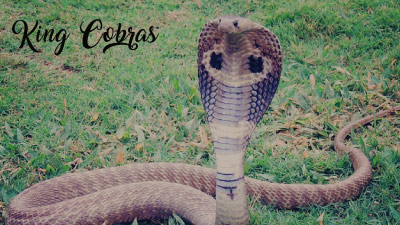Nesting with the King Cobra
- POSTED ON: 12 Jan, 2018
- TOTAL VIEWS: 1919 Views
- POSTED BY: Ramnath K. Chandrasekhar
- ARTICLE POINTS: 100 Points
Sometimes, I dread going to social functions because of one reason – being bombarded with questions! Yet, my enthusiasm wells up involuntarily and I’ve never been tired of sharing my experiences in the wild. One unforgettable experience was in 2008.
I was assisting a wildlife film crew, making a documentary for the National Geographic Television, at Agumbe, Karnataka. The filming conditions were daunting. It was the monsoon and it rained for 14 hours in a day. The light was poor. The terrain was slippery, infested with leeches. But after a point, the leech bites didn’t matter- we were here to film the King Cobra, the longest venomous snake in the world!

Before monsoon, the King Cobra displays a rather unusual behaviour for a snake, which amounts to nothing short of a miracle even though it is a natural phenomenon. The female snake, about 13 feet long, builds a nest to lay its eggs. In fact, the King Cobra is the only snake in the world that builds a nest. “How can a snake build a nest?,” was a question that lingered in my mind. Here I was, blessed with a lifetime opportunity to see the snake. But, there seemed to be something bigger in store for me!
The researchers found a half-built King Cobra nest. Being a resident production assistant, I was asked to spend time in a ‘hide’- a camouflage makeshift arrangement where one could wait and film an animal without being noticed. I was to film the snake, finishing its nest building process, if it did come back.
The closest village was eight kilometers from the nesting spot. Everyday, I trekked this distance, along with the local field assistant and researcher. To reach the ‘hide’, we had to cross a flowing stream, submerged in chest deep water, carrying all our camera equipment. I then spent around twelve hours sitting in the hide, bitten by leeches, waiting eagerly for the snake. A few days went by and there was no sign of the snake.
On the last day, the snake emerged. It twisted its body into a noose to gather a pile of leaves, and moving slowly, placed them on top of the nest. This act was repeated several times. My hands shivered with excitement. The action was unfolding right in front of my eyes, and the experience was unbelievable!
The King Cobra’s nest is so tightly constructed that even after torrential downpour and extremely humid conditions, it remains intact. During the incubation period, which lasts for about ninety days, the eggs inside the nest remain dry.
The joy of watching this magnificent snake build a nest was a priceless reward. I feel privileged to be one among few in the world who have documented this rare behaviour of the King Cobra. It’s a memory I would treasure for life.
Answer the questions below based on the above article!